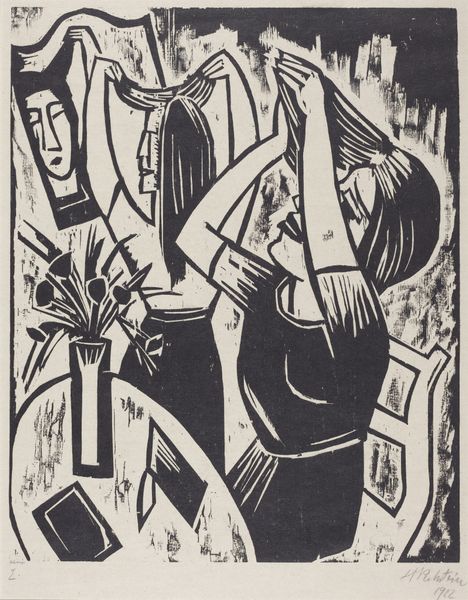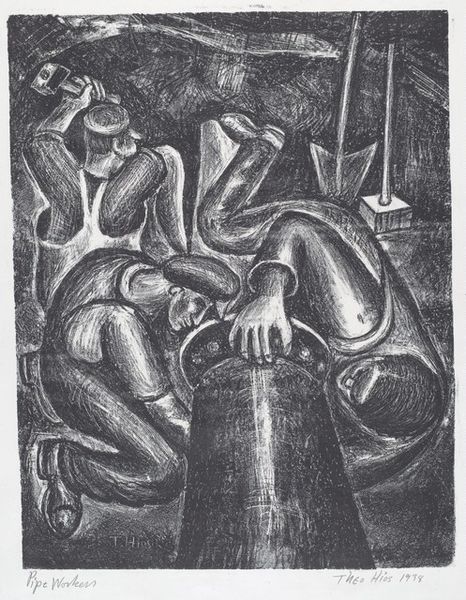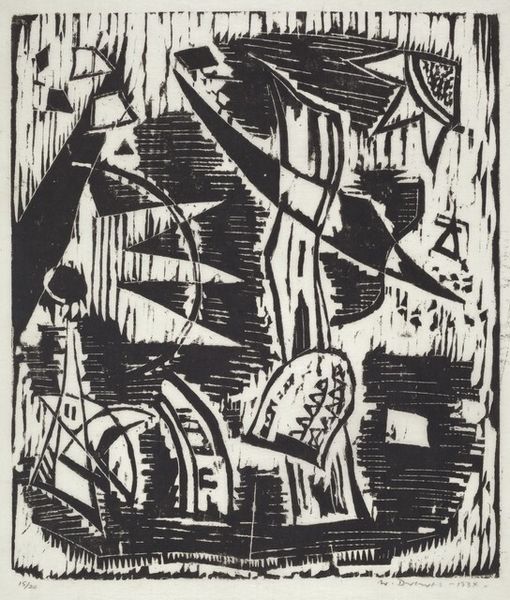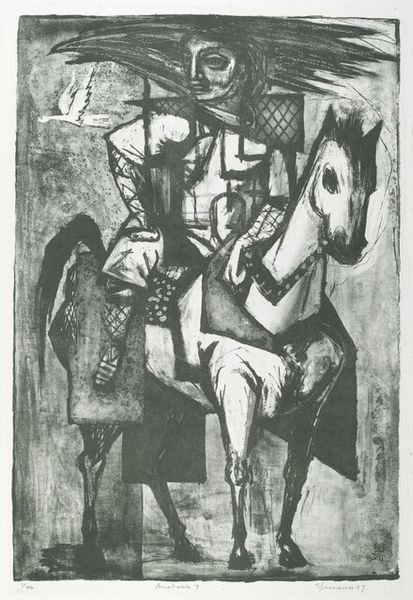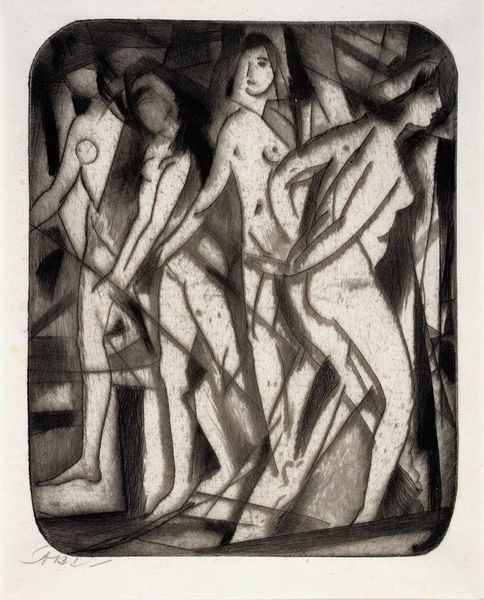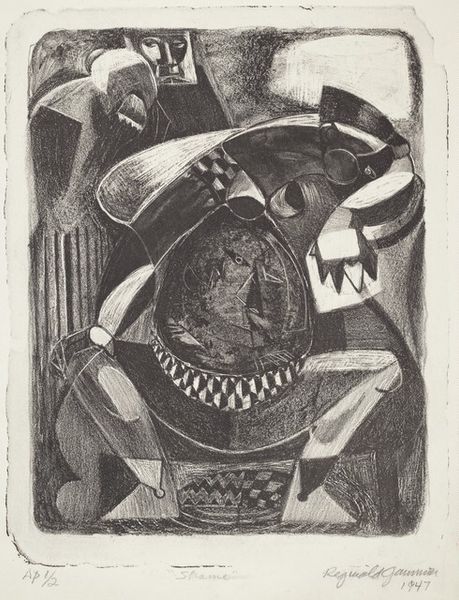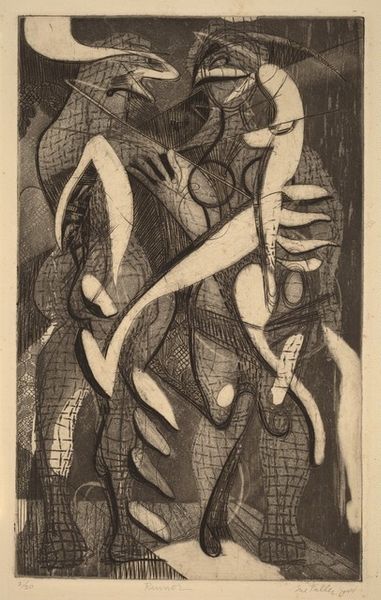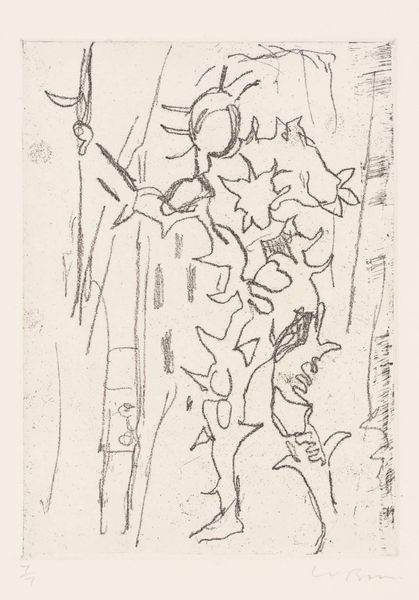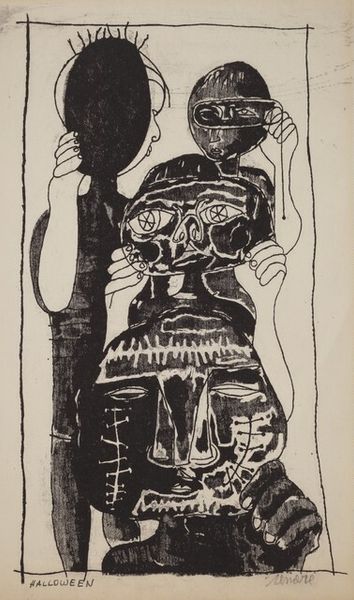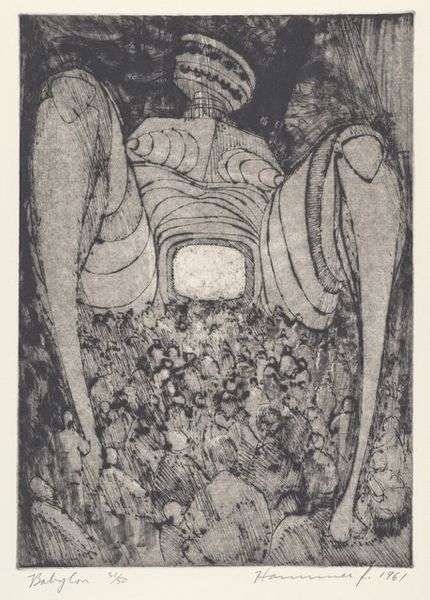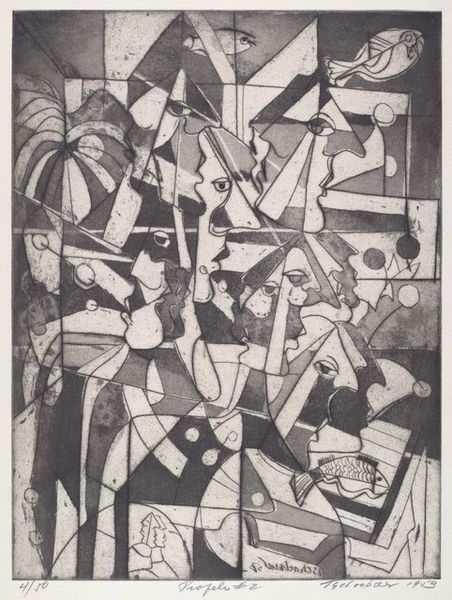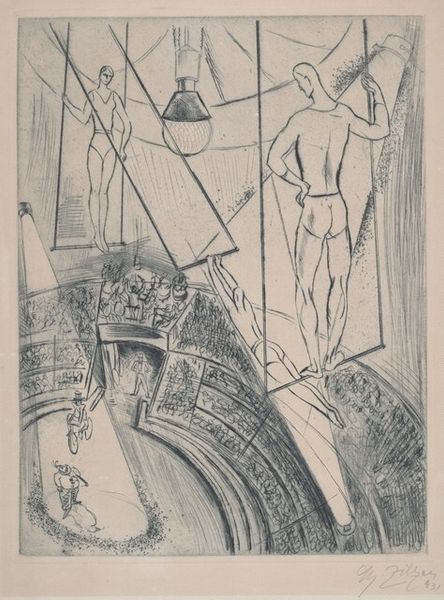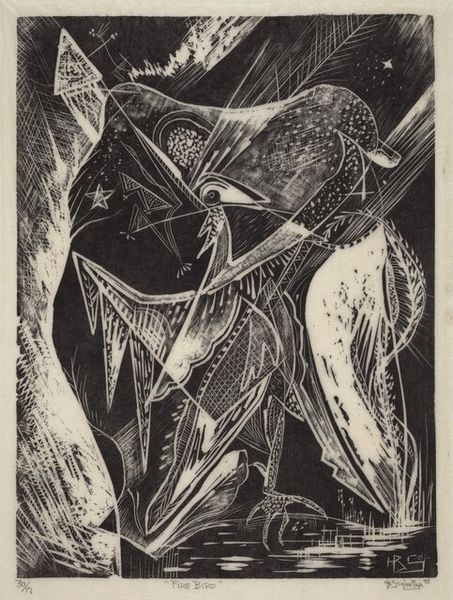
drawing, print, ink
#
drawing
#
narrative-art
# print
#
figuration
#
social-realism
#
ink
Dimensions: image: 237 x 163 mm sheet: 282 x 237 mm
Copyright: National Gallery of Art: CC0 1.0
Curator: Immediately, I’m struck by the unsettling energy and compressed composition. There's a claustrophobic feeling here, isn’t there? Editor: Absolutely. This drawing, crafted by Robert Jackson in 1943, bears the provocative title "Pachuco Wars," rendered with ink on paper. Jackson captured a really dark period in our history. The drawing powerfully renders racial tensions. Curator: Visually, these elongated figures, caught in the act of aggression, seem almost archetypal. Note the stylized forms: their mask-like faces, and how those minimal details evoke a visceral sense of fear and animosity. What kind of symbolic resonances did this subject carry at the time? Editor: "Pachuco" was a term for young Mexican Americans who adopted a flamboyant style, particularly the zoot suit, to express cultural identity. During World War II, this self-assertion was perceived as unpatriotic, leading to violent clashes with servicemen and civilians. Those distorted visages convey, on the one hand, blind hate. On the other, that mask suggests dehumanization. Curator: The architecture in the background, barely suggested, amplifies that sense of confinement, that something is closing in around these figures. The high contrast also plays a key role here, wouldn't you say? That harsh contrast amplifies the sense of violence about to occur or which is now occurring, with whites ganging up on pachucos and stripping them in broad daylight. The artist leaves nothing for us to imagine. Editor: And this kind of blatant rendering, the refusal of subtlety, feels almost like a social manifesto of sorts. There's a starkness in its depiction which invites viewers to feel the heat of the moment and, in turn, reflect on racial justice, right? Curator: Right, but even without understanding the specifics, the image speaks to broader themes of prejudice, fear of the other, and social control. That potent mix is the origin of conflict itself, then and today. Editor: Considering the raw and emotional quality and its symbolism, the drawing compels us to look into our social wounds of war-era intolerance, and think about the universal lessons about acceptance that we continue to draw.
Comments
No comments
Be the first to comment and join the conversation on the ultimate creative platform.
